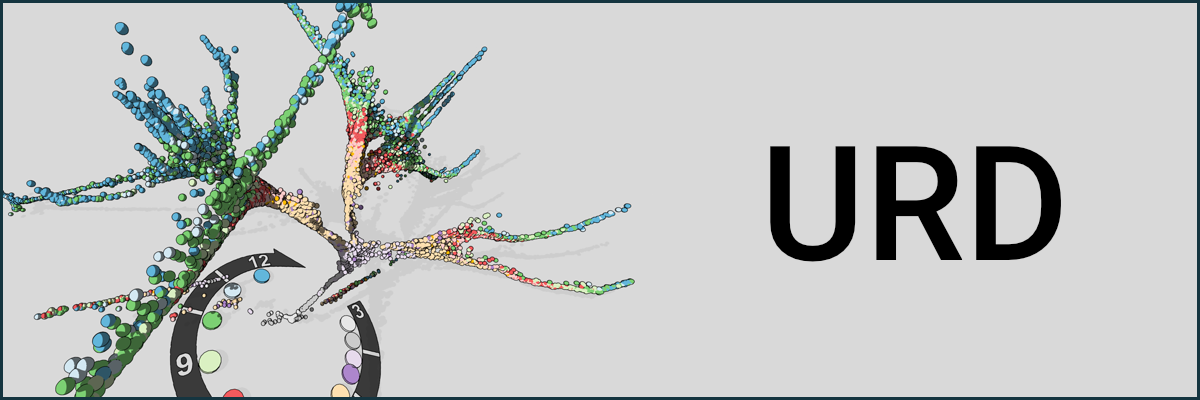Software & Data
Software
Our software is maintained in our Github Repository  .
.

URD 
Visit URD’s Github repository 

URD is described and applied to early zebrafish embryogenesis in:
Single-cell reconstruction of developmental trajectories during zebrafish embryogenesis.
Farrell JA & Wang Y (equal contribution), Riesenfeld SJ, Shekhar K, Regev A & Schier AF (equal contribution).
Science 26 Apr 2018. doi: 10.1126/science.aar3131
Data
Single-cell reconstruction of developmental trajectories during zebrafish embryogenesis
In this work, we performed a single-cell RNAseq timecourse of early zebrafish embryogenesis (38,731 cells, across 12 timepoints spanning 3.3 – 12 hours post-fertilization), and reconstructed a branching specification tree leading to 25 cell types.
Browsing the data
- Browse the data interactively online in the Broad Single-cell Portal
). This allows plotting the expression of genes of interest on the 3D force-directed layout, tSNE projection, or spatially assigned 50% epiboly cells.
- Download and install URD
, then download the zebrafish data as a pre-processed URD object
(requires logging into the Broad Single-cell Portal). This allows more responsive plotting on the 3D force-directed layout, the dendrogram layout, or the tSNE projections (including dual-color plotting of multiple genes), as well as isolation of particular cell populations, differential expression, and more.
Getting the data
- The processed genes x cells counts matrix
(requires logging into the Broad Single-cell Portal) can be used as a starting point for your own analysis.
- Alternatively, the aligned BAM files are deposited in NCBI GEO under accession number GSE106587 along with instructions about downloading and realigning them.
 BACK TO TOP
BACK TO TOP